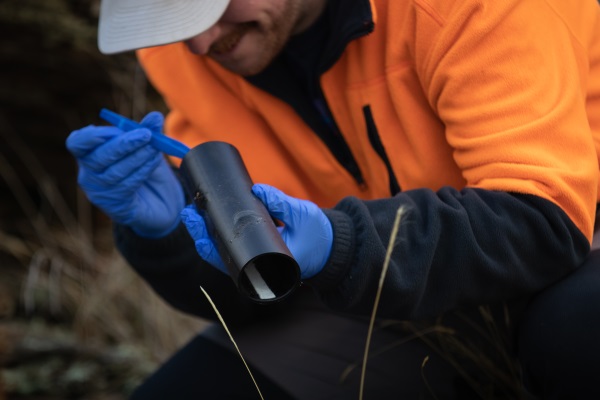A potentially nationally and internationally ground-breaking reptile monitoring technique’s being trialled in Queenstown and Central Otago.
The Southern Lakes Sanctuary Trust’s just completed its first proof-of-concept study, involving collecting Environmental DNA (eDNA) animals shed within their habitat to measure the health and habitat occupancy of lizards.
Initial results are encouraging and indicate the trust’s developed an effective and accurate tool to help protect the species, and it’s now on the hunt for additional funding to expand the use of the technique.
Led by Southern Lakes Sanctuary’s Tom Reeves, with methodology from conservation researcher and analyst Nathan Whitmore and field work from herpetologist Sam Purdie, the eDNA collection could revolutionise monitoring and protecting some of the area’s more elusive and endangered lizard species, like the Otago skink.
To collect the eDNA, pipes are left in the target species’ habitat, which the animals run through, shedding fragments of DNA in the process.
After a set period, the pipes are removed and a filter brush within them is sent to Wilderlab NZ Ltd for analysis — the non-invasive method requires less labour and is potentially more cost-effective than existing techniques.
While eDNA has been used for conservation monitoring previously — primarily by taking water and soil samples — it’s believed this is the first time terrestrial samples have been taken.
The results show what species are present in an area and give a measure of habitat occupancy, which, over time, can help the trust make more informed conservation decisions to protect rare species.
The first two proof-of-concept trials have been conducted at Queenstown’s Kiwi Park and Mokomoko Dryland Sanctuary, near Alexandra, with more planned to use the method in a variety of habitats, with a variety of species.




